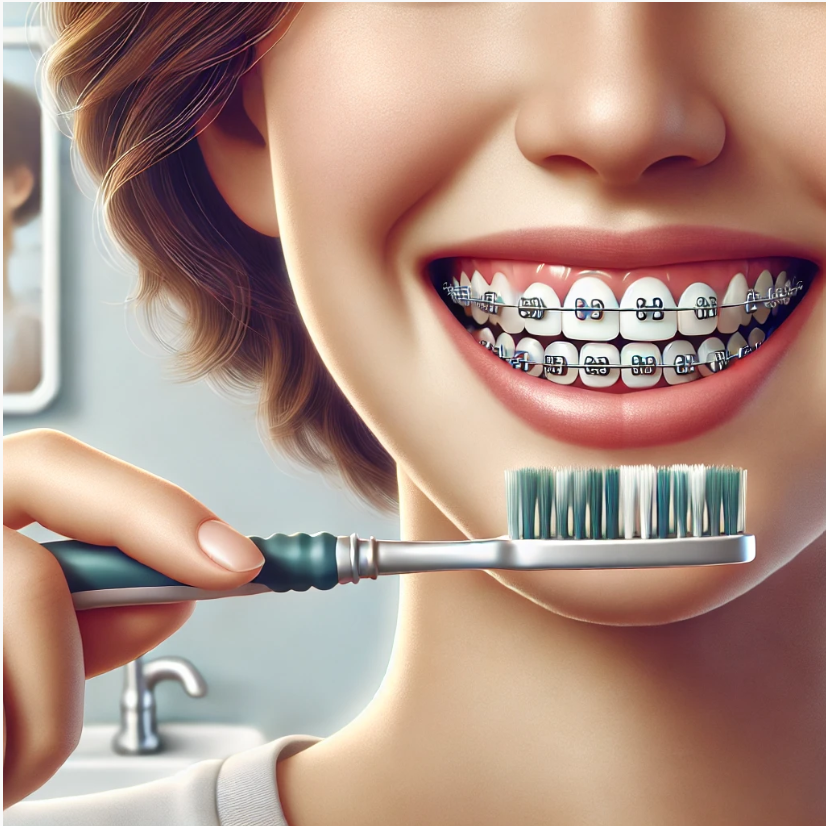Orthodontic treatment, whether using conventional braces or clear aligners, is an effective solution for improving dental alignment and enhancing the aesthetics of a smile. However, despite its benefits, this treatment also presents new challenges in maintaining oral hygiene. Orthodontic appliances such as brackets, wires, or aligners often create small spaces where food debris and plaque accumulate, increasing the risk of tooth decay, gingivitis, and bad breath. Therefore, maintaining oral hygiene during orthodontic treatment is not only essential for oral health but also supports the overall success of the treatment.
According to drg. Aulia Ayub, Sp.Ort, an orthodontic specialist, “Brushing teeth during orthodontic treatment requires special techniques and extra patience. Patients must understand that poor oral hygiene can slow down the treatment process and lead to complications such as cavities or gum inflammation.” Proper brushing techniques are one of the key factors in maintaining dental health during orthodontic care. For conventional braces users, Drg. Aulia recommends using a soft-bristled toothbrush specifically designed for orthodontic use. The brushing technique should be performed at a 45-degree angle towards the bracket edges, using small circular motions around the wires and brackets. Areas around the brackets and under the wires must be carefully cleaned to ensure no food debris is left behind.
In addition to a regular toothbrush, interdental brushes are highly recommended for cleaning hard-to-reach areas, such as between the teeth and beneath the wires. Interdental brushes have a special design with small bristles that can fit into tight spaces around orthodontic appliances. For clear aligner users, the first step is to remove the aligner before brushing. The teeth must then be thoroughly cleaned, especially after eating, to prevent bacteria from getting trapped inside the aligner when worn again. Regularly cleaning the aligners is also crucial to prevent plaque buildup and unpleasant odors.
Using fluoride toothpaste is highly recommended during orthodontic treatment. Fluoride helps strengthen tooth enamel and protects against cavities. However, patients are advised to avoid toothpaste with high abrasiveness, as it can damage orthodontic appliances or irritate the soft tissues in the mouth. Besides brushing, flossing is another essential step that is often overlooked. For braces users, special floss such as super floss or floss threaders can make it easier to clean between teeth. For those who find manual flossing too difficult or time-consuming, a water flosser can be a practical alternative. A water flosser works by spraying pressurized water to remove plaque and food debris from hard-to-reach areas.
In addition to brushing and flossing, using an antimicrobial mouthwash can help reduce bacterial buildup in the mouth. Mouthwash containing chlorhexidine or other antimicrobial agents can be used to prevent gum inflammation during treatment. However, drg. Aulia emphasizes the importance of consulting a dentist before using such products regularly, as excessive use can cause discoloration of the teeth or tongue. “The success of orthodontic treatment does not only depend on the appliances used but also on the patient's habits in maintaining oral hygiene. Patients who consistently maintain good oral hygiene during treatment will achieve better and faster results,” said drg. Aulia.
Beyond daily oral care, patients are also encouraged to visit their dentist regularly for check-ups and professional cleanings. Routine check-ups allow dentists to monitor treatment progress, ensure no issues arise, and provide additional care if needed. During these visits, dentists can also offer personalized tips based on each patient’s oral condition.
It is important to remember that oral hygiene during orthodontic treatment not only impacts short-term health but also affects the final treatment outcome. Healthy teeth during treatment allow orthodontists to work more effectively, resulting in well-aligned and aesthetically pleasing teeth without complications. Additionally, patients who maintain good oral hygiene experience fewer discomforts, such as gum inflammation or plaque buildup.
The motivation to maintain oral hygiene during orthodontic treatment can also be strengthened by understanding its long-term benefits. In addition to achieving a more beautiful smile, maintaining clean teeth throughout treatment helps prevent other health issues, such as infections, periodontal disease, or even digestive problems caused by improper tooth function. Education on good oral hygiene habits can also be carried forward into daily life even after treatment is complete, creating a lasting positive impact.
With modern technology and expert guidance, maintaining oral hygiene during orthodontic treatment is now easier. However, success still depends on the patient’s commitment to consistently practicing good habits. By following expert recommendations and maintaining communication with their dentist, patients can ensure their orthodontic treatment journey is not only effective but also comfortable and free from complications. This initiative also supports the Sustainable Development Goals (SDGs), particularly Goal 3: Good Health and Well-being.
Through this guide, readers are expected to understand the importance of oral hygiene during orthodontic treatment and be motivated to implement the recommended steps. A healthy and beautiful smile not only boosts self-confidence but also reflects good overall hygiene habits.
Authors: drg. I Putu Arya Ramadhan, Al Haqi Insan Pratama

